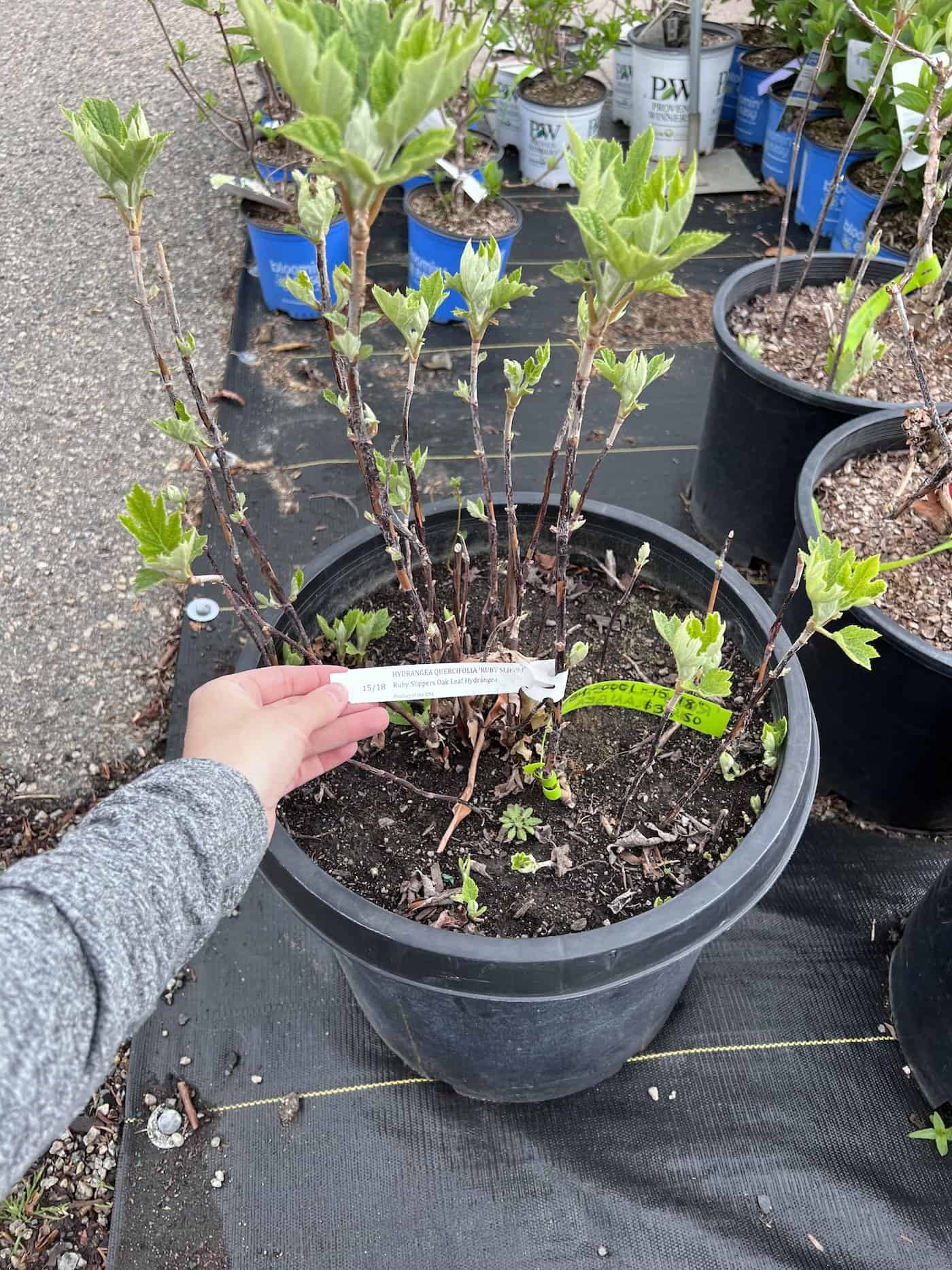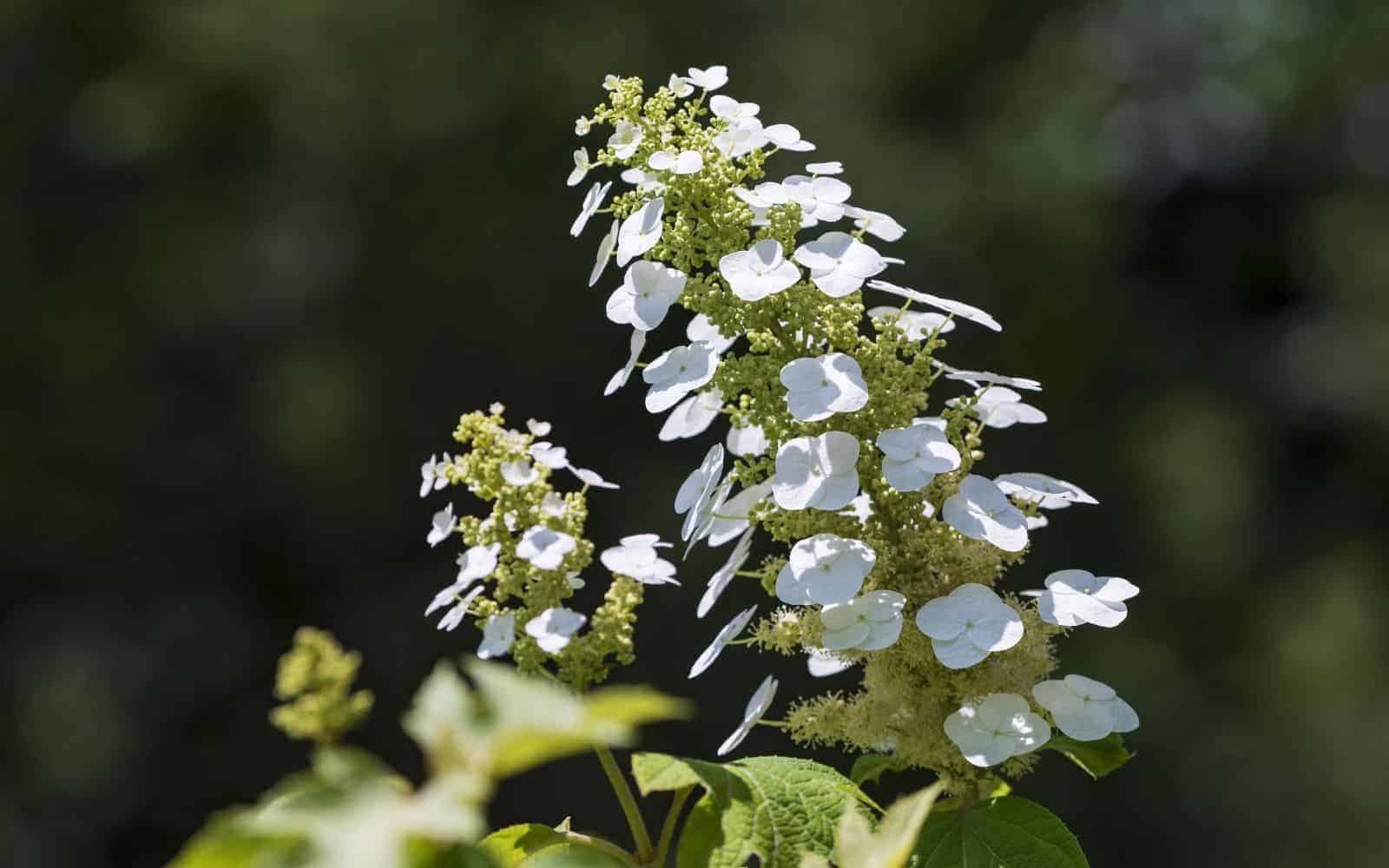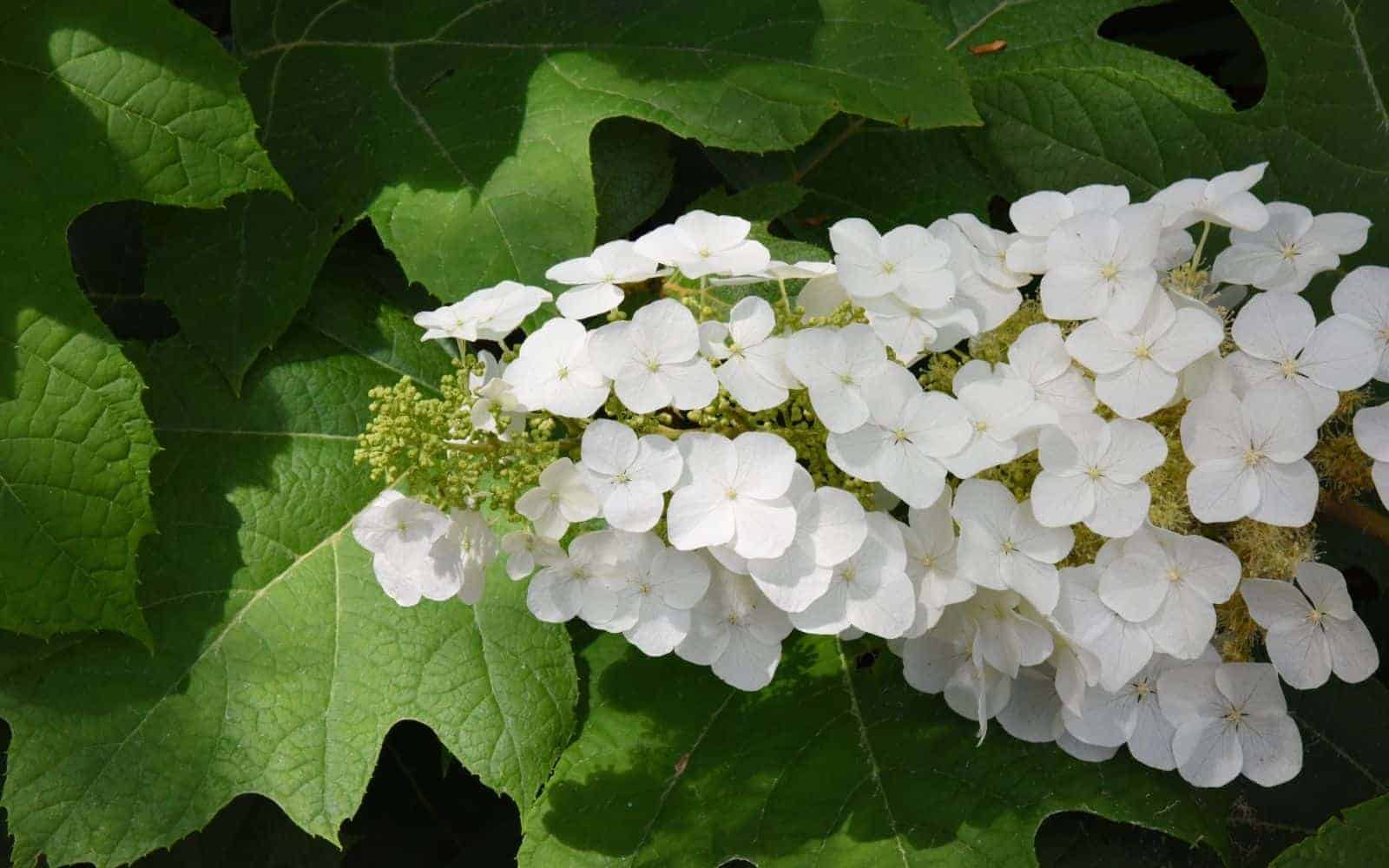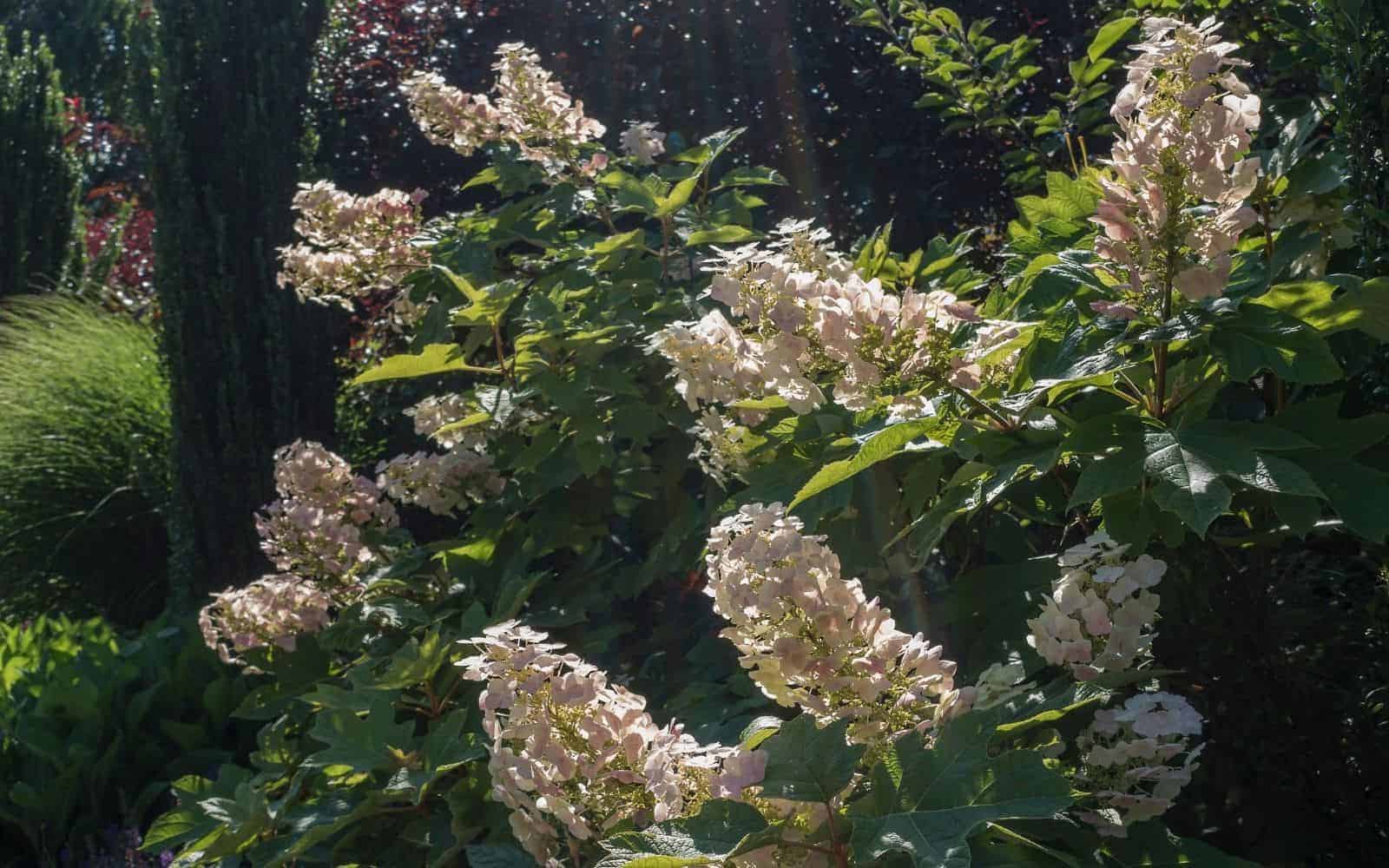Ruby Slippers hydrangea is a compact cultivar of oakleaf hydrangea. This variety blooms with large flowers that change colors from white to pink. Easy to care for, this shrub is primarily used as a border plant or as a hedge. Ruby Slippers can be grown in most warm, moist climates, growing best in partial-to-full sun areas.
Ruby Slippers hydrangea basics
Ruby Slippers (Hydrangea quercifolia ‘Ruby Slippers’) is an oakleaf hydrangea cultivar known for its compact, manageable size and ornamental flowers. This deciduous flowering shrub often brings year-round color to gardens and ornamental landscaping.
A cross between two popular oakleaf hydrangea varieties, Snow Queen and Pee Wee, the Ruby Slippers is well known for its color-changing flowers. The Ruby Slippers hydrangea was introduced by the US National Arboretum in 2010.
When the large conical flowers bloom mid-summer (usually June or July), they are a crisp white color. As the flowers mature, they turn a deep ruby red color, thus giving it the name Ruby Slippers. These blooms grow upright and are strong enough to withstand heavy rainfall.
The leaves of a Ruby Slippers hydrangea resemble those of an oak tree. Like the flowers, the leaves and bark are known for their seasonal change of color. In the fall, the leaves turn a deep red color while the bark turns to a shade of bronze.
Generally, an individual plant only grows to be about three or four feet tall. However, when cultivated in the right environment, it can reach up to eight feet tall!

Plant your Ruby Slippers Hydrangeas several feet apart. One plant can grow as wide as four or five feet. Maintaining a smaller size will require more frequent pruning. After planting, a Ruby Slippers hydrangea only takes a short time to grow and mature.

How to plant Ruby Slippers hydrangea
Ruby Slippers hydrangeas grow best in warmer climates with access to plenty of moisture. When cultivating this hydrangea variety, plant it in an area protected from high wind and colder temperatures.
Ruby Slipper hydrangeas can even be grown in large pots. Planting your hydrangeas in a pot allows you to move them depending on the time of year and the weather they are exposed to. Be careful not to move your hydrangeas too frequently though, as this could shock the root system.
Wherever you plant your hydrangeas, be sure to use a well-draining soil mixture. They are not particular to the type of soil and can even grow in some acidic soils. Hydrangeas planted in nutrient-rich soil do not require extra fertilizers. However, using fertilizers can help the Hydrangea bloom better each summer.
Plant your Ruby Slipper hydrangeas in an area that receives both ample sunlight and shade. The shrub will grow better when it receives filtered light rather than direct sunshine.
Plant care for Ruby Slippers hydrangea
For the first year of the hHydrangea’s life, it will require frequent watering. You should water it at least once a week, if not more. To reduce the frequency of water needed, use summer mulch. This mulch will help the soil retain its moisture longer. After the first year of the Hydrangea’s life, it will require less water and attention. With an established root system, a Ruby Slipper Hydrangea can withstand high heat and droughts.
Leaf blight, which causes dark spots on the leaves of a plant, can be prevented by watering the soil instead of the leaves, watering in the morning instead of at night, and adding compost to the base of the plant weekly.
As for powdery mildew, it is more likely to grow in areas with low sunlight. Ensure all of the hydrangea plants are exposed to sunlight at some point in the day to prevent mildew build-up. If any of the plants start to overcrowd each other, prune them back. More air circulation around the plants can prevent mildew buildup.
One way to treat disease is to decrease watering and increase air circulation around the plant. Alternatively, transplant it to an area with better soil drainage or more air movement. Commercial organic fungicides also tend to be effective in treating fungal infections. Follow the application instructions and frequency guidelines listed on the product you choose.

Ruby Slipper hydrangea pruning guide
Ruby Slipper Hydrangeas do not require frequent pruning or much care. When branches die, remove them back to the base of the plant. If the hydrangea overgrows its designated area, trim it back to size.
Pruning a Ruby Slipper Hydrangea should take place towards the end of summertime, typically immediately after the plant has flowered. If you wait to prune your hydrangeas until spring, you will cut off that summer’s flowers, as this type of hydrangea blooms on old wood. Ruby Slipper hydrangeas bloom from the previous year’s growth that has overwintered with flower buds.
Most gardeners only prune the dead branches from their Ruby Slipper hydrangeas to avoid removing any future flowers. Some recommend pruning the flowers shortly after they bloom; however, this is primarily for gardeners looking to sell the flowers for bouquets and floral arrangements.







